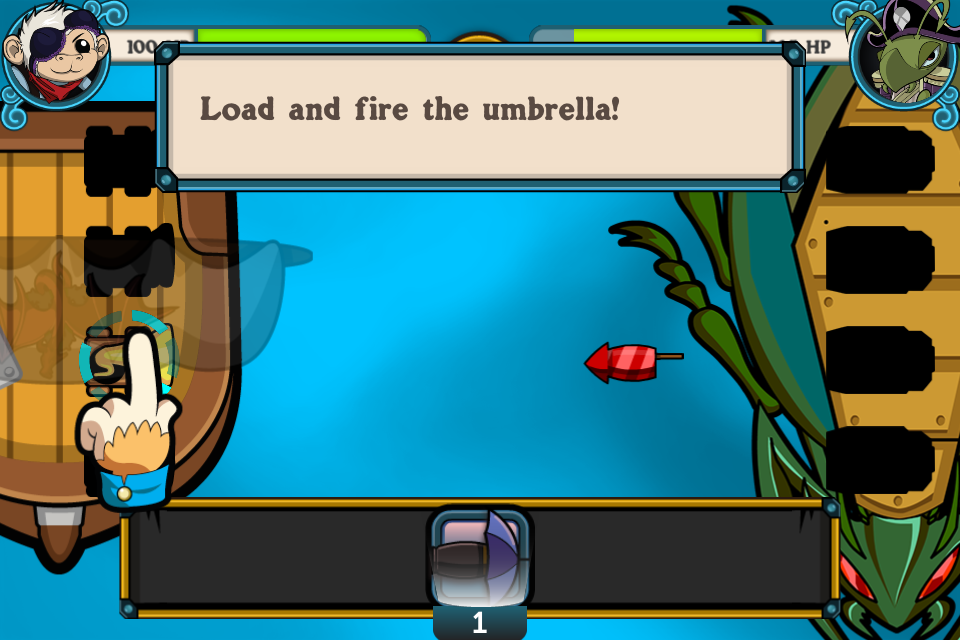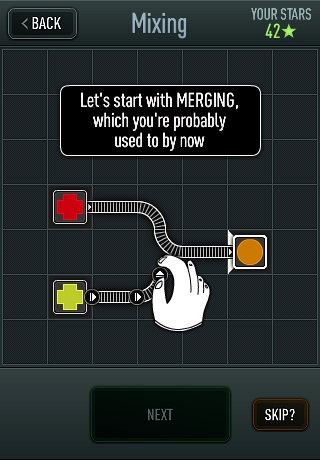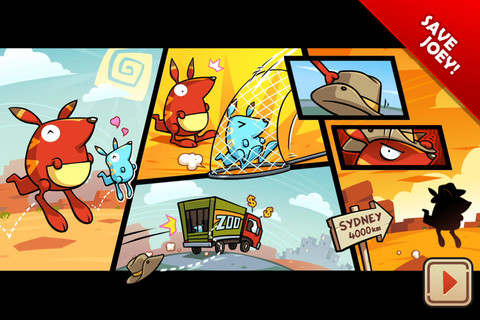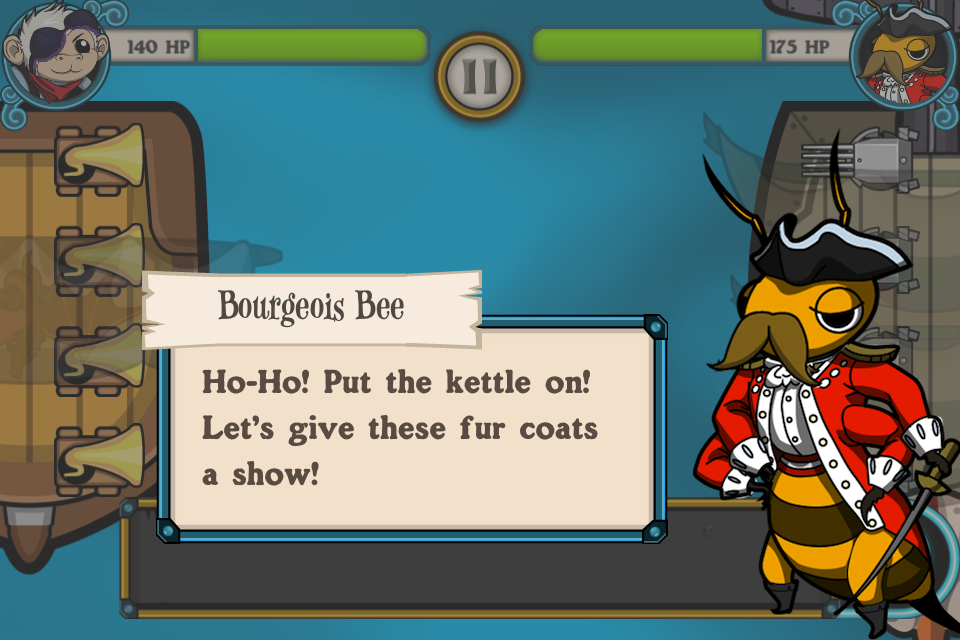Mobile Game Tutorials & Storytelling
Tutorials and onboarding is an absolutely key process in mobile games. The less your game costs to the player, the more pressure it puts on your tutorial. Players won’t think twice about leaving a free game and not coming back. If it’s not the game they believed it was from the beginning, they will move on to another.
As with “easy in, easy out”, with every mechanic you design for the player, it’s incredibly important to speed your target audience into the optimal game flow of your game. The sooner you can get your target audience into a fun state in the game, the better. Staging and gating complexity as the game moves on will allow you to grow your players into deeply engaged players you want, but during the onboarding process they’re shy, timid and exploratory. Don’t expect the majority of your players to handle a huge jump in complexity within the first few sessions they play.
Measure
The first rule of building a tutorial : measure and optimize each step. Similar to social games, it is extremely powerful to measure the rate at which users leave your game during the tutorial stages.
You may believe your game is the greatest thing in the world, but Analytics will always keep you grounded into what is actually happening with your players. Some designers, developers have ethical issues with analytics. Your opinion is your own, some designers chose to use it as a tool that helps them design games for their target audience with more detail. Flurry, SWRVE, Kontagent, Mixpanel, etc. all offer amazing third party solutions, you may even choose to use your own.
At each step of the tutorial, make sure your game is sending an event to an analytics service. This will help you devise points in your tutorial that are specifically painful for users. Then you can look to soften the blow.
Common issues with tutorials are :
- Too long
- Too complex
- No Freedom
- No Interaction
Too Long
Powder Monkeys had a 3 stage tutorial : teach battle, teach world map, then teach island capturing. Each stage took about 30 seconds to complete, which ended up being far too much time.
Attrition is inevitable with a tutorial. The more steps your tutorial has, the more %ge of users you will lose. It’s just bound to happen. Players have a limited amount of time they have to experiment with your game, so give them a chance to ease in to your mechanics.
Too Complex
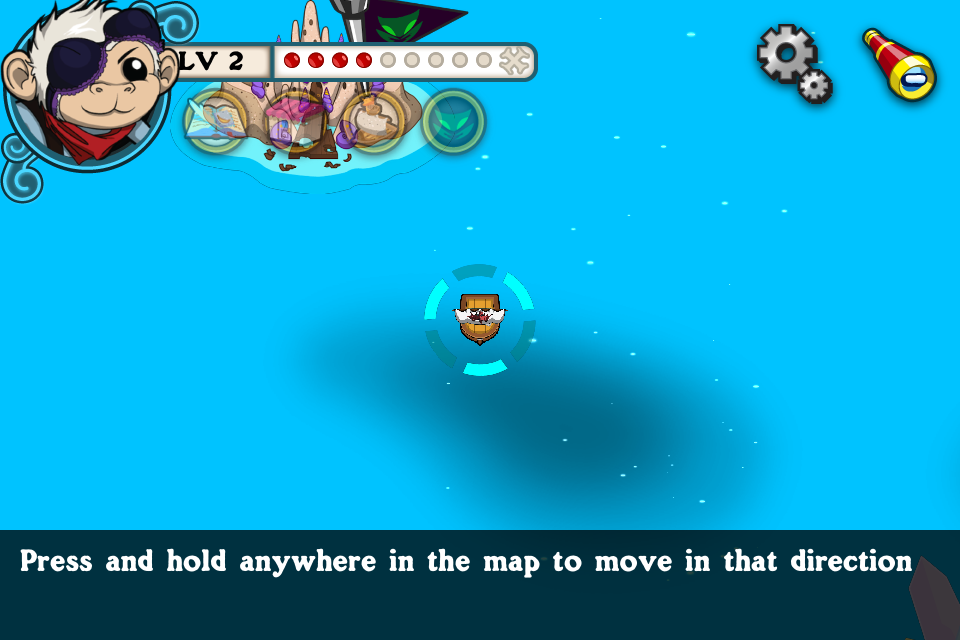
At this point we had a massive dropoff rate of players. They needed a breather, and we didn’t give them enough direction on what to do next.
When the player completed the battle tutorial, they were dropped in the middle of a map. They were allowed to travel anywhere. We found many players just got lost and left the game at this point rather then moving on to the next stage. We marked the next stage with a red arrow, but some players still struggled.
Manage your game complexity so that at no point the player is introduced to too much complexity all at once. Players will immediately feel frustrated if they are introduced to too much complexity all at once.
No Freedom
Trainyard, a great game launched on the AppStore by an Indie game designer, Matt Rix. The initial launch was without much fanfare. The tutorial involved the player going through 20+ levels with each level increasing the complexity of the game, some reaffirming lessons taught before. This does a great job of managing time, each level is 10-20 seconds and gives the player time to leave the game. This tutorial does a great job of managing complexity, with each level introducing new complexity. However, each tutorial is a straight line track, with one input allowed on each screen. With so much text and blatant hand holding it made the tutorial feel rigid and boring. The player never reached a fun state in the game until 10 minutes or more into the tutorial. Make sure the player can reach an optimal game flow as quickly as possible, so in this case Matt Rix altered the tutorial to introduce a few mechanics, then allow the player to problem solve through a set of simple puzzles based on that initial mechanic. These quick victories pulled the player into the core game flow quickly, and made them feel smart. After these changes, and a well placed Reddit article, Trainyard was catapulted to the top of the App charts. This was a well deserved accomplishment.
No Interaction
Using learnings from Powder Monkeys, we reduced the time and text in Fashion Star Boutique. Each step is small and punchy, giving the player plenty of opportunities to interact with the game.
The final cardinal sin of game tutorials is the act of too much text, never getting the player to actually interact with the game. It’s all about the game flow. Get the player into the game flow as soon as possible. Every line of text the player has to read to get into the game, is a huge delay on them entering on game flow. Not to mention that 80%-90% of players don’t read text in tutorials, they won’t read it, they won’t understand it, they are looking to get to the core gameplay as soon as possible to make a decision whether this is the next staple game on their phone. Don’t give them an excuse to leave!
Storytelling on Mobile
Story is a major compelling reason for creating addiction and immersion in games. Regardless of its business value, it’s also a true reason why games is a creative art form. Combining story with amazing graphical design, with immersive audio in a cohesive interactive package is what makes games such a joy to develop and to design.
Core games, such as TellTale games, the Final Fantasy series, and many point and click adventures on the AppStore, lean on a heavy story to lead the player through the gameplay. This is at the core of their game, and they each target a separate niche which loves that style of game. This audience has a longer then usual session length, and are willing to memorize and recant stories from sessions before. They are also more likely to remember previous sessions since this audience is more likely to beat the game within a week or less. Their sessions have little time between them.
For most casual mobile games, having that in depth story is not possible. The average casual player on the AppStore just doesn’t have enough focus and attention to retain a full scape story. Yet story is still a very compelling reason for players to be immersed in games. But, like game mechanics and control mechanics you have to find ways to adapt the story telling to the distractions and mobile environment the player is playing in.
The best casual stories on the AppStore usually can be captivated with just a few pictures. Run Roo Run, Angry Birds, Cut the Rope, etc. all introduce their story within seconds. The core message is memorable, and the impact is felt through great artistry and simple but sophisticated storytelling techniques.
This was the entire beginning story for 5th Cell ©’s Run Roo Run(tm) game. It established the character, and a core message within 10 seconds.
Powder Monkeys supported a deep story with multiple characters. While it’s important to set up characters, build personality, you must balance this with the mobile experience.
Think like Pixar’s “Up” instead of Game of Thrones. Tell a captivating story simply with a few screens first. Come up with a simple, initial core message, then build on it from there. Understand that many casual gamers just don’t have time to read long passages, so using as many story telling devices without text is usually far stronger.



